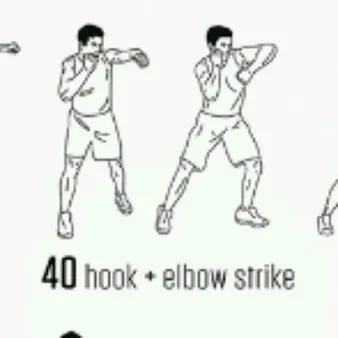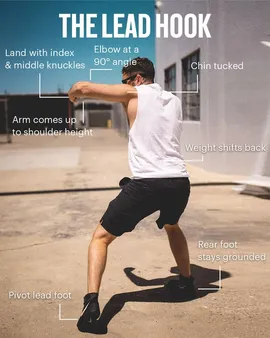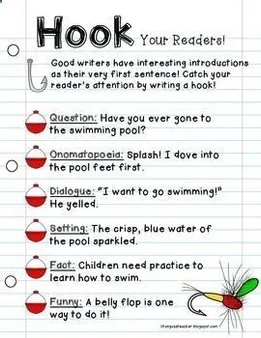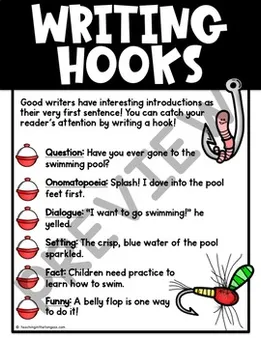Table of Contents
Welcome to Kizworld, your ultimate guide to crafting captivating hooks that leave your audience enthralled. Discover the art of "How to do a hook" and elevate your storytelling, writing, and communication skills to new heights. Learn the secrets of creating hooks that grab attention, pique curiosity, and leave your audience eagerly anticipating more.
How to do a Hook: The Ultimate Guide to Writing Catchy Headlines
I. How to Do a Hook
How to Do a Hook
Creating an effective hook is an art form that demands a strategic combination of tactics to captivate your audience and leave them yearning for more. Whether you craft a compelling story, deliver a persuasive speech, or engage in a stimulating conversation, mastering the art of crafting hooks is pivotal to making a lasting impression.
This comprehensive guide will equip you with the knowledge and techniques to construct hooks that resonate with your audience, leaving them captivated and eager to delve deeper into your message. Explore the top gymnastics competitions and events where athletes showcase their remarkable skills and talents.
Step 1: Understand Your Audience
A profound understanding of your audience forms the cornerstone of creating a captivating hook. Knowing their demographics, interests, pain points, and aspirations empowers you to tailor your hook specifically to their needs and desires. Discover the numerous benefits of gymnastics for kids, fostering physical development, coordination, and self-confidence.
Step 2: Identify Your Hook
With a clear understanding of your audience, you can delve into identifying potential hooks that will resonate with them. Consider what unique or intriguing elements of your message will pique their curiosity and compel them to continue reading, watching, or listening.
Type | Description | Examples |
Question | Pose a compelling question that sparks curiosity and invites the audience to seek the answer. | "Have you ever wondered how gymnasts perform those gravity-defying moves?" |
Surprise | Present an unexpected fact or statistic that challenges conventional wisdom or captures attention. | "Did you know that gymnasts train for hours every day to achieve their incredible flexibility?" |
Personal Anecdote | Share a relevant personal story or experience that connects with the audience on an emotional level. | "I remember the thrill of my first gymnastics competition, the adrenaline pumping through my veins as I prepared to take the floor." |
Step 3: Craft Your Hook
Once you have identified a promising hook, craft it meticulously to maximize its impact. Employ vivid language, sensory details, and a strong call to action that compels the audience to take the next step, whether it's reading further, watching a video, or signing up for a service.
Step 4: Place Your Hook Strategically
The placement of your hook is crucial in determining its effectiveness. Consider the context in which you're presenting your message and identify the optimal moment to introduce the hook. Whether it's the opening line of an article, the first few seconds of a video, or the beginning of a speech, ensure that your hook captivates the audience from the outset.
Step 5: Test and Refine Your Hook
The final step in the process of creating a compelling hook is to test and refine it based on audience feedback. Share your hook with a small group of individuals who represent your target audience and gather their honest opinions. Use their feedback to fine-tune your hook, ensuring that it resonates with your intended audience and effectively achieves its purpose.
- Always stay updated with the latest information and trends related to your chosen topic.
- Regularly review and improve your content to ensure that it remains relevant and valuable to your readers.
- Encourage engagement by responding to comments and feedback, fostering a sense of community and building relationships with your audience.
II. Types of Hooks
Types of Hooks
Effective hooks come in different types, each with its own advantages. Let's delve into some common types of hooks.
- Storytelling:
- Question:
- Statistics:
- Controversy:
- Surprise:
Storytelling: Harness the power of storytelling to hook your audience. Weave a captivating tale that resonates with your readers' emotions, drawing them into your narrative.
Question: Pose a compelling question that sparks curiosity and encourages deeper engagement with your content. Frame your question strategically to hint at the value your piece offers.
Statistics: Incorporate startling statistics or facts that grab attention and leave a lasting impression. Use data to paint a vivid picture and establish your credibility as a well-informed source.
Controversy: Take a stance on a controversial topic, inviting debate and discussion. However, approach this type of hook with sensitivity and respect, avoiding harmful generalizations or incendiary language.
Surprise: Craft an unexpected or surprising hook that jolts your audience out of their complacency. Subvert expectations and create a sense of intrigue that compels readers to continue reading.
III. How to Throw a Hook
How to Throw a Hook
Master the Basics of Hook Punch
The hook is a powerful and versatile punch that can be used to attack the head or body of your opponent. It is thrown with a bent elbow and a circular motion, and it can be used to generate a lot of power. To learn how to throw a hook, follow these steps:
Step 1: Stand in a Fighting Stance | Feet shoulder-width apart, knees slightly bent, hands up in front of your face, elbows close to your body. |
|---|---|
Step 2: Bend Your Elbow and Turn Your Fist | Wind up your hook by bending your elbow and turning your fist so that it is facing down. |
Step 3: Swing Your Arm in a Circular Motion | Start your hook by swinging your arm back in a circular motion. |
Step 4: Extend Your Arm and Snap Your Fist | As you swing your arm forward, extend your arm fully and snap your fist forward at your target. |
Step 5: Return Your Hand to Your Face | After you throw your hook, quickly return your hand to your face to protect yourself from counterattacks. |
Some of the more common mistakes that beginners make when throwing a hook include:
- Not bending their elbow enough
- Not turning their fist enough
- Not swinging their arm in a circular motion
- Not extending their arm fully
- Not snapping their fist forward at their target
- Not returning their hand to their face quickly enough
By avoiding these mistakes, you can learn how to throw a hook that is both powerful and accurate. With practice, you will be able to use the hook to knock out your opponents and win fights.
Learn how to improve your balance and coordination with surfing
Tips for Throwing a Powerful Hook
Here are some tips for throwing a powerful hook:
- Use your legs to generate power. When you throw a hook, push off from your back leg and drive your hips forward.
- Keep your elbow close to your body. This will help you generate more power and also protect your elbow from injury.
- Don't overextend your arm. This can make you lose power and accuracy.
- Snap your fist forward at your target. This will help you generate more power and also increase your accuracy.
- Practice, practice, practice! The more you practice throwing a hook, the better you will become at it.
Learn how to choose to right snowboarding for your skill level and style
IV. Tips for Throwing a Hook
Tips for Throwing a Hook
Mastering the art of throwing a hook requires a combination of technique, timing, and power. Here are some tips to help you improve your hook:
- Start with a strong stance: Your stance should be wide and stable, with your feet shoulder-width apart and your knees slightly bent. Your weight should be evenly distributed between your front and back foot.
- Generate power from your legs: The power for your hook comes from your legs. As you throw the punch, drive your weight forward from your back foot to your front foot, and rotate your hips and shoulders into the punch.
- Keep your elbow tucked in: As you throw the hook, keep your elbow tucked in close to your body. This will help you generate more power and accuracy.
- Aim for the jaw or temple: The hook is a powerful punch that can do serious damage if it lands on the right spot. Aim for the jaw or temple of your opponent, as these are the most vulnerable areas.
- Follow through with your punch: After you throw the hook, follow through with your punch by extending your arm fully. This will help you generate more power and accuracy.
With practice, you can develop a powerful and accurate hook that can be a devastating weapon in your arsenal.
Here are some additional tips for throwing a hook:
- Practice your hooks on a heavy bag or with a partner. This will help you get a feel for the proper technique and timing.
- Be patient. It takes time to develop a good hook. Don't get discouraged if you don't see results immediately. Just keep practicing and you will eventually see improvement.
- Have fun! Throwing a hook should be enjoyable. If you're not having fun, you're less likely to stick with it and improve.
If you're looking to learn more about boxing, check out our article on How to Learn Boxing for Self-Defense and Fitness.
Mistake | How to Avoid |
Dropping your hand after the punch | Keep your hand up to protect your face |
Punching with your arm instead of your shoulder | Generate power from your legs and hips |
telegraphing your punch | Keep your body relaxed and don't tense up before you throw the punch |
Not following through with your punch | Extend your arm fully after you throw the punch |
Aiming for the wrong spot | Aim for the jaw or temple of your opponent |
By avoiding these common mistakes, you can improve your hook and become a more effective boxer.
V. Conclusion
Mastering the art of crafting hooks is a skill that unlocks the door to captivating your audience and leaving a lasting impression. By understanding your audience, identifying and crafting compelling hooks, placing them strategically, and continuously testing and refining your approach, you can create hooks that resonate and engage. Remember, effective hooks are not mere tricks; they are the foundation of effective communication, persuasion, and storytelling. Embrace the power of hooks to elevate your writing, presentations, and conversations, and watch as your audience becomes captivated and eager for more.